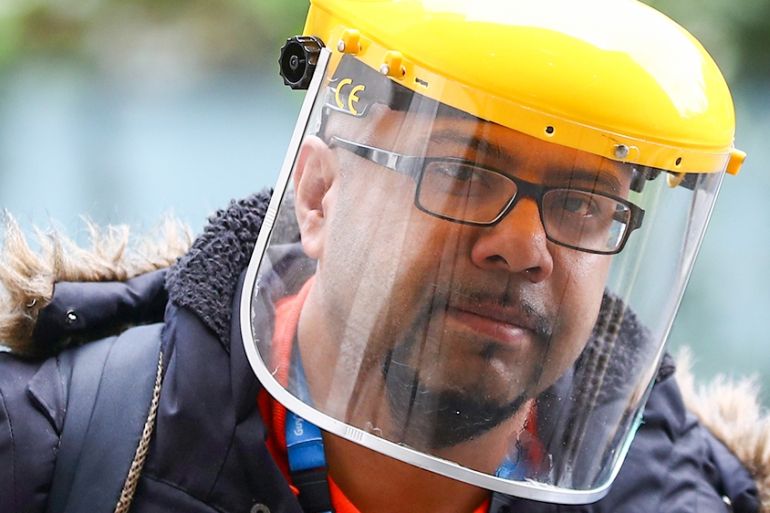Third of critically ill COVID-19 UK patients from BME backgrounds
Release of figures comes amid wider concerns coronavirus is exacerbating health inequalities in the country.

London, United Kingdom – A third of critically ill COVID-19 patients in the United Kingdom are from Black and Minority Ethnic (BME) backgrounds, according to new data.
Of the 2,249 critical patients registered in the UK up to April 3, 13.8 percent were recorded as “Asian”, 13.6 percent as “Black” and 6.6 percent as “Other”, a report by the Intensive Care National Audit and Research Centre (ICNARC) said on Saturday.
Keep reading
list of 3 itemsHow does coronavirus spread and how can you protect yourself?
Coronavirus: Which countries have confirmed cases?
As of Tuesday, the UK had confirmed 52,290 coronavirus infections and 5,373 deaths, according to data compiled by Johns Hopkins University in the United States.
As well as the cases of six frontline doctors from BME backgrounds who died after contracting COVID-19, the ICNARC findings have sparked concerns among BME communities, who represent about 13 percent of the population.
Wasim Hanif, a professor specialising in diabetes at the University Hospital Birmingham and a trustee of the South Asian Health Foundation UK, said anecdotal accounts from colleagues of a disproportionate number of South Asian patients in intensive care, appeared to be reflected in the data.
But he cautioned: “We need to ask for more ethnicity data so that we know a little more about these patients; whether these are younger patients, what their underlying conditions are, and what the other factors are. That is what needs to be looked into.”
Health inequalities
The data has been released amid other concerns the coronavirus is exacerbating health inequalities in the UK.
|
|
“The reality is nobody is immune from the health and economic impacts from COVID-19. But existing structural inequalities mean that some groups will bear the brunt of COVID-19 more than others,” said Zubaida Haque, deputy director of the race equality think tank Runnymede Trust.
A 2017 report by the Joseph Rowntree Charitable Trust on race and poverty found that the UK poverty rate was twice as high for BME communities than for white groups, citing rising levels of unemployment amongst African, mixed-race and Caribbean groups especially, and low-paid work as driving factors.
“BME groups in the UK are amongst the poorest of socioeconomic groups. There are extremely high rates of child poverty and they’re much more likely to be employed in low-paid, precarious work. They’re also much more likely to be living in multigenerational households, which makes BME elderly people more at risk of severe illness from COVID-19,” Haque said.
“BME women are particularly vulnerable as they are more likely to be in precarious work than their white counterparts,” she added.
‘Biological racism’
Omar Khan, the director of Runnymede Trust, also urged caution when interpreting the data in order not to erase the intersection of poverty and race in health inequalities.
“There’s a biological racism in this kind of assuming that ethnic minorities are inherently more likely to have diabetes,” he said.
“Even things like heart disease and diabetes have social and economic determinants – things like diet, exercise, discrimination and poverty.”
Salman Waqar, general secretary of the British Islamic Medical Association, said the findings invited more questions than answers, though they appeared to correlate with the experiences of frontline intensive care unit staff.
“BAME patients are vastly under-represented in health research and there many things we simply do not know. Urgent action is needed to understand why they may be experiencing this disease burden from COVID-19 and take appropriate action to prevent further deaths.”